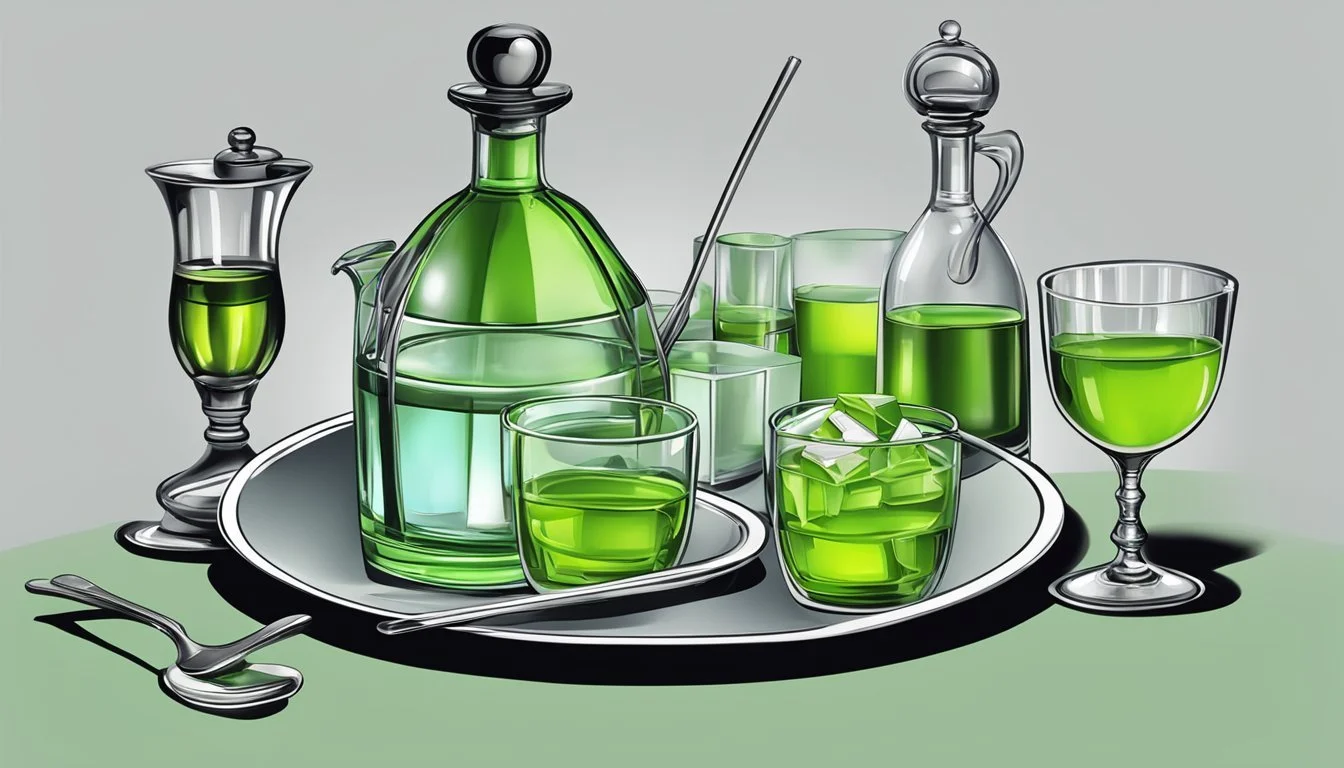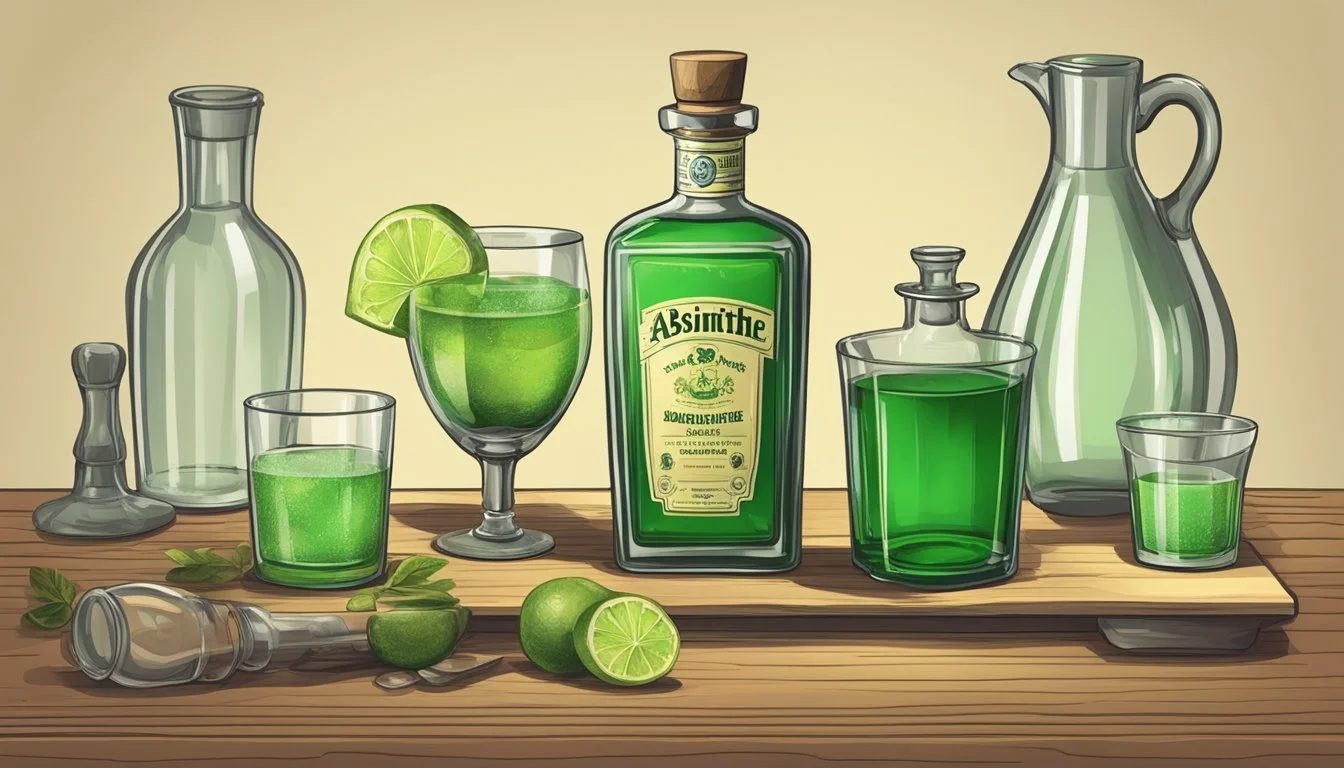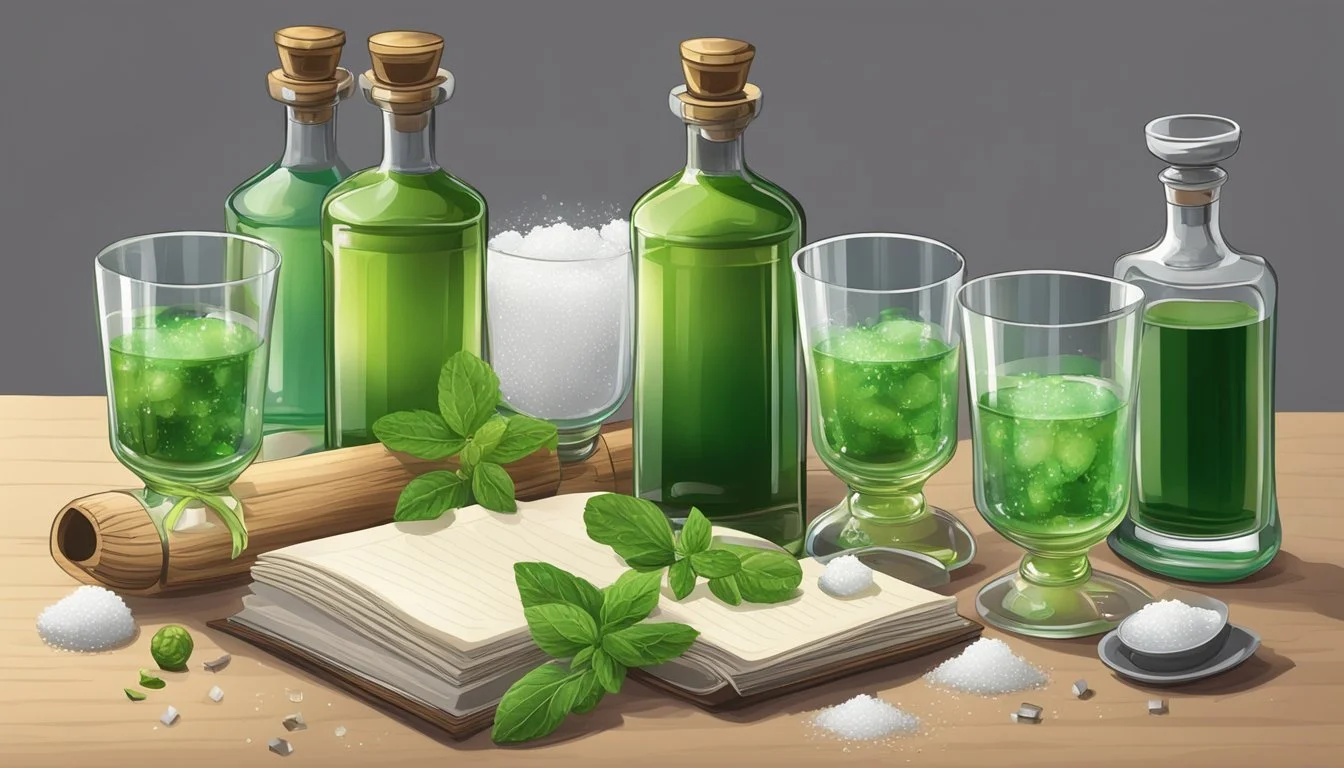How Many Servings of Absinthe Is Too Much
Understanding Safe Consumption
Absinthe, often referred to as the "Green Fairy," is a potent spirit that can be as mesmerizing as it is strong. With an alcohol by volume (ABV) typically ranging from 45% to 74%, it's crucial to approach absinthe consumption with caution. Generally, consuming more than three servings of absinthe can be considered excessive due to its high alcohol content.
A standard serving is about 1 ounce, often diluted with water in a 3:1 to 5:1 ratio. This dilution helps mellow its intense bitterness and high alcohol content. But remember, even diluted, the effects of absinthe can be quite potent, and it’s easy to underestimate its impact.
Moderation is key when enjoying absinthe. Exceeding three servings not only increases the risk of over-intoxication but can also lead to unpleasant side effects such as dizziness or nausea. By knowing and respecting your limits, you can enjoy the unique experience of absinthe without facing any unwanted consequences.
History and Origins of Absinthe
Absinthe has a storied history, from its ancient medicinal roots to its widespread prohibition and eventual revival. The tale highlights its popularity among 19th-century French artists, subsequent legal battles, and modern-day resurgence.
Ancient Roots and Early Distillation
Absinthe's origins trace back to ancient Egypt, where it was used for medicinal purposes. The practice of using wormwood, a key ingredient in absinthe, was common for its supposed health benefits.
By the late 18th century, absinthe distillation found a home in Switzerland. Dr. Pierre Ordinaire, a French doctor, is credited with commercializing the absinthe recipe in 1792 in Couvet.
The concoction was initially promoted as a cure-all tonic, blending anise, fennel, and wormwood.
The Rise and Fall in 19th-Century Europe
Absinthe's popularity soared in France during the Belle Époque, especially among artists and writers. Notable figures such as Vincent van Gogh and Ernest Hemingway were drawn to its alleged hallucinogenic effects.
French soldiers stationed in Algeria helped spread absinthe upon returning to France, making it a staple of French cafés.
However, fears around its supposed harmful effects grew, leading to its eventual decline.
Prohibition and Legal Challenges
Driven by the temperance movement and concerns over thujone's toxicity, many countries imposed bans on absinthe. France banned it in 1915, following an earlier ban in Switzerland in 1910.
Concerns over social issues and public health pushed these prohibitions. The U.S. followed suit in 1912, spurred by exaggerated claims of absinthe's dangers.
These bans persisted for much of the 20th century, severely impacting absinthe production and availability.
Modern Revival and Legal Status
Interest in absinthe resurfaced in the late 20th century, fueled by historical curiosity and scientific studies debunking myths about thujone.
In 2007, the United States lifted its ban, allowing the sale of thujone-regulated absinthe. European countries gradually followed, with Switzerland legalizing it in 2005 under specific conditions.
Today, absinthe is legally produced and enjoyed, albeit under strict regulations to ensure safety.
Understanding Absinthe
Absinthe is a distinctive distilled spirit with high alcohol content. It has a rich history, various myths, and notable chemical properties that have shaped its perception.
Defining Absinthe
Absinthe is a potent distilled spirit, traditionally ranging between 45-74% ABV (90-148 proof). It is derived from botanicals, primarily Artemisia absinthium, or grand wormwood.
This spirit is often green, earning the name "la fée verte" or "the green fairy." Unlike other spirits, absinthe isn’t traditionally bottled with added sugar. Instead, it is served with water and sometimes sugar, creating a cloudy mixture called "louche."
The Science of Thujone
Thujone is a chemical compound found in wormwood, a crucial ingredient in absinthe. Its purported hallucinogenic properties led to the drink being banned in many countries during the early 20th century.
Modern absinthe has regulated thujone levels, ensuring safety. While it can be a central nervous system stimulant, the quantities in today's absinthe are too low to produce hallucinogenic effects.
Misconceptions and Myths
Numerous myths surround absinthe, with many believing it to be a hallucinogen. Although thujone contributes to these tales, the hallucinogenic properties associated with absinthe are largely exaggerated.
The drink’s high ABV often leads to drunkenness, which can be mistaken for hallucinogenic effects. Additionally, historically reported absinthe-induced psychoses were more due to alcohol abuse than thujone content.
Botanicals and Ingredients
Absinthe, known for its high alcohol content, is crafted using a variety of herbs and botanicals. The most prominent among them are anise, fennel, and wormwood, which contribute significantly to its unique flavor profile.
Primary Botanical Components
Wormwood (Artemisia absinthium) is a crucial ingredient that gives absinthe its characteristic bitterness and its name. It contains thujone, a compound historically believed to cause hallucinations, though in controlled amounts, it's harmless.
Anise (Pimpinella anisum) and star anise (Illicium verum) contribute the primary licorice flavor. Anise is sweet and aromatic, offering a distinct taste that is hard to miss.
Fennel (Foeniculum vulgare) is another essential component. It adds a slight sweetness and a touch of spice, balancing the robust flavors of wormwood and anise.
Creating the Green Fairy's Flavor Profile
The combination of botanicals creates a complex and layered flavor profile. Hyssop and lemon balm add a subtle earthy note, which enhances the herbal complexity.
Melissa (Melissa officinalis), also known as lemon balm, introduces a mild citrusy tone, lightening the spirit's overall heaviness.
Sage (Salvia officinalis) and chrysanthemum occasionally find their way into the mix, offering floral and woody undertones.
This medley of plants and herbs is carefully distilled, often more than once, to extract and blend the flavors harmoniously. The meticulous selection and balance of these components are what make absinthe famously unique in taste and character.
Production and Types of Absinthe
The production process of absinthe and the various types available are crucial for understanding its unique characteristics. Different methods of distillation and ingredients result in distinct flavors and qualities.
Traditional Distilling Methods
Absinthe is traditionally made by distilling botanicals, with wormwood, anise, and fennel being the primary ingredients.
Distillers often use a neutral spirit, such as grape or grain spirit, as the base for maceration.
In Switzerland, a famous absinthe-producing region, both verte (green) and blanche (white) types are popular. The verte variety gets its color from additional herbs, while blanche is clear, focusing on the pure flavors of the botanicals.
The distillation process is similar to that of gin, emphasizing the balance of botanical essences, which contribute to absinthe's unique taste profile.
Cultural Impact of Absinthe
Absinthe, often referred to as the Green Fairy, has left a profound mark on the worlds of art and literature. Its influence can be traced to many famous artists and writers of the late 19th and early 20th centuries, who found inspiration in its effects.
Absinthe in the Arts
Absinthe's influence on art is significant. The drink became a symbol of bohemian culture during the Belle Époque period. Artists such as Vincent van Gogh and Pablo Picasso have been linked to absinthe consumption. Van Gogh, known for his intense and emotional works, is said to have consumed the drink frequently, possibly influencing his vivid use of color and brush strokes.
Édouard Manet's painting "The Absinthe Drinker" (1859) is one of the earliest notable works featuring the spirit. Similarly, Henri de Toulouse-Lautrec often depicted absinthe in his posters and paintings, capturing the ambiance of Parisian cafés where the drink was popular. The allure of absinthe and its reputed effects on creativity made it a muse for many.
Notable Absinthe Drinkers
Many renowned figures of the literary and art worlds were known to drink absinthe. Vincent van Gogh, whose works have become iconic in Western art history, consumed it regularly. Additionally, Oscar Wilde, the famous playwright and poet, was another avid absinthe drinker.
French poet Paul Verlaine is also linked with the drink. His turbulent life and romantic poetry intertwined with absinthe consumption, contributing to his mythos. The infamous Jean Lanfray trial, where Lanfray murdered his family allegedly under the influence of absinthe, highlighted the drink's controversial reputation. Such associations have cemented absinthe's place in cultural history, symbolizing both creativity and controversy.
Preparing and Serving Absinthe
Properly preparing and serving absinthe requires attention to detail and specific tools. Key elements include the traditional absinthe ritual and various serving techniques.
The Absinthe Ritual
The absinthe ritual transforms the strong spirit into a complex beverage. Start by placing an absinthe glass beneath an absinthe fountain or a carafe. Pour a measure of absinthe, typically 1 oz (30 ml), into the glass.
Place a specialized absinthe spoon with slits across the rim of the glass. Set a sugar cube on the spoon. Slowly drip cold water over the sugar cube until it dissolves completely and the liquid becomes cloudy, a process known as louche. This dilution releases essential oils and transforms absinthe's flavor profile. The ritual involves precision and patience, enhancing the experience of drinking absinthe.
Serving Techniques and Variations
Different serving methods bring out unique aspects of absinthe. The traditional absinthe drip involves slowly dripping cold water until the correct dilution is reached. Alternatively, an absinthe fountain can be used for a more dramatic presentation, especially in social settings.
Innovative techniques include the Flaming Absinthe method. Soak a sugar cube in absinthe, light it, and let it caramelize before stirring it into the drink. For cocktails, the Absinthe Frappé blends absinthe with crushed ice, sugar, and water, offering a refreshing twist. Using the right glassware, such as bulged absinthe glasses, ensures accurate measurement and optimal flavor.
Experimenting with these methods allows enthusiasts to fully appreciate the complexities of absinthe.
Consumption Safety and Recommendations
Proper consumption of absinthe ensures safety and enhances the experience. Key aspects include determining safe serving sizes and understanding the health implications.
Determining Safe Serving Sizes
A typical serving of absinthe is around 1 to 1.5 ounces. Due to its high alcohol by volume (ABV), often ranging between 45% and 74%, dilution is crucial. Adding cool or ice water in a ratio of 3:1 to 5:1 water to absinthe helps mitigate its potent effects.
The presence of thujone in traditional absinthe once raised health concerns, but modern absinthe is generally thujone-free. Bartenders and experts advise against drinking absinthe straight due to its powerful bouquet and high proof. Always consume absinthe with caution and respect its potent nature to avoid negative health effects.
Health Implications and Safety
Absinthe, with its high ethanol content, can pose serious health risks if consumed irresponsibly. Ethanol is metabolized by the liver and can cause liver strain when consumed in large quantities. Overconsumption can lead to acute alcohol poisoning and long-term health issues.
Its high proof and ABV make it a strong alcoholic beverage. Consuming absinthe responsibly involves understanding its potency and adhering to recommended serving sizes. Always dilute absinthe and avoid consuming it in rapid succession to maintain safety. Additionally, absinthe is flammable, so it must be handled with care to avoid accidents.
Sticking to recommended serving guidelines and recognizing the importance of dilution can help ensure a safer, more enjoyable experience.
Pairings and Recipes
Absinthe pairs well with a variety of cocktails and complementary foods. This section explores how to incorporate absinthe into your drinks and meals to elevate the overall experience.
Absinthe in Cocktails
Absinthe cocktails often feature unique ingredients. The Monkey Gland combines absinthe with grenadine, orange juice, and gin. This cocktail balances the herbal intensity of absinthe with sweet and citrus notes.
The classic Absinthe Frappe uses simple syrup, soda water, and mint to create a refreshing drink. Using an absinthe fountain or absinthe spoon ensures proper dilution and mixing of these ingredients.
Absinthe can be enjoyed neat in traditional absinthe glasses. Adding a few drops of water mellows its strong flavor. For a stronger drink, a Cognac and Absinthe blend offers a rich, aromatic experience.
Complementary Foods and Drinks
Simple desserts like vanilla ice cream or chocolate cake pair well with absinthe. The straightforward flavors of these desserts do not overpower the herbal notes of the spirit.
Pastis, ouzo, and sambuca are similar anise-flavored spirits that complement absinthe. These drinks can be served alongside absinthe to highlight its unique characteristics.
For a savory pairing, dishes that incorporate light, herbal elements work best. A dish with lemon, bitters, or a mild sauce can enhance the complex flavors of absinthe. Avoid overly complex or multi-layered dishes as they can clash with absinthe's intense profile.
Legality and Availability Across the Globe
Absinthe's legal status varies widely around the world, influencing where and how consumers can purchase this distinctive spirit. The rise of the absinthe revival has seen many countries relax their once stringent laws.
Navigating International Absinthe Regulations
Absinthe regulations differ greatly from one country to another. In the EU, absinthe is legal but its production and sale must adhere to strict guidelines on thujone content. France, known for its historically stringent laws, lifted its absinthe ban in 2011, with guidelines on labeling and thujone limits.
Switzerland, the birthplace of absinthe, relegalized it in 2005, putting quality controls in place for absinthes including the traditional verte and bleue types. In the United States, absinthe was banned in 1912 due to concerns over thujone toxicity, but in 2007, the ban was reinterpreted. Now, absinthe can be sold if it is thujone-free, defined as containing less than 10 ppm of thujone.
New Orleans is a notable hub for absinthe, celebrating the spirit through events and festivals. It's important to check local regulations as they can be specific and vary significantly.
Where to Buy Quality Absinthe
Finding high-quality absinthe requires some research due to the varied availability and regulations globally. In the EU, reputable sources include artisan distilleries in France and Switzerland. Both countries offer traditional absinthe, such as the green verte and the clear bleue.
In the United States, one can find quality imported absinthes as well as domestic brands adhering to federal guidelines. Specialty liquor stores and online retailers often have curated selections. Some reputable brands offer products through major online platforms that comply with local regulations.
For those traveling, visiting distilleries in New Orleans or Switzerland can provide an authentic experience and ensure the purchase of genuine absinthe. Always verify the thujone content and ensure compliance with local law.
The Future of Absinthe
As far as absinthe's future is concerned, production methods are not expected to change much.
Key producers like France and Switzerland will likely continue to dominate the market.
Innovation in absinthe is focused on refining traditional recipes rather than creating new ones.
Trends indicate a growing appreciation for artisanal and craft absinthe.
Distillers are exploring the use of local botanicals to create unique flavors.
Legal regulations for absinthe remain stringent in many regions.
This maintains the drink's quality and authenticity.
Public interest in absinthe has seen a resurgence in recent years.
Bars and restaurants are more frequently adding absinthe to their menus.
Consumers are becoming more educated about the proper way to serve and drink absinthe.
Legal frameworks around absinthe remain crucial.
They ensure that products are safe and genuine.
This balance between tradition and modernity shapes the current and future landscape of absinthe.
Increasing global demand for premium spirits might also influence absinthe's growth.
Promotions and marketing efforts continue to highlight its rich history and unique characteristics.
Ultimately, the future of absinthe appears stable and rooted in its storied past, with a steady interest from distillers, consumers, and regulators alike.











